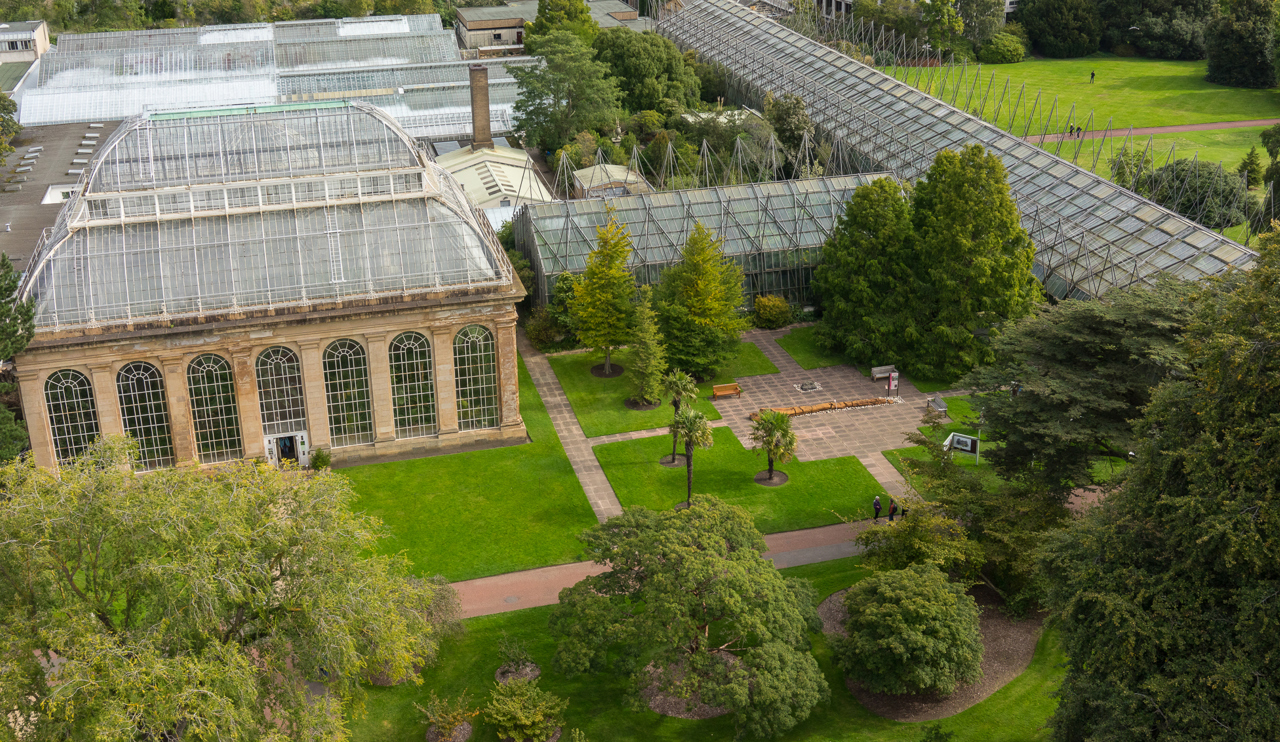The Palm Houses
Edinburgh's two grand old Palm Houses are dramatic landmarks in RBGE's long history of caring for tender plants under glass.
The Tropical Palm House
The octagonal Palm House is the oldest glasshouse at the Garden, designed and built by an unknown architect at a cost of £1,500. At 18m high and 14m wide, it was the largest of its kind in Britain when it was built in 1834 (two years before the completion of the Great Conservatory at Chatsworth). Now known as the Tropical Palm House, it remains at the centre of the Glasshouse Range.
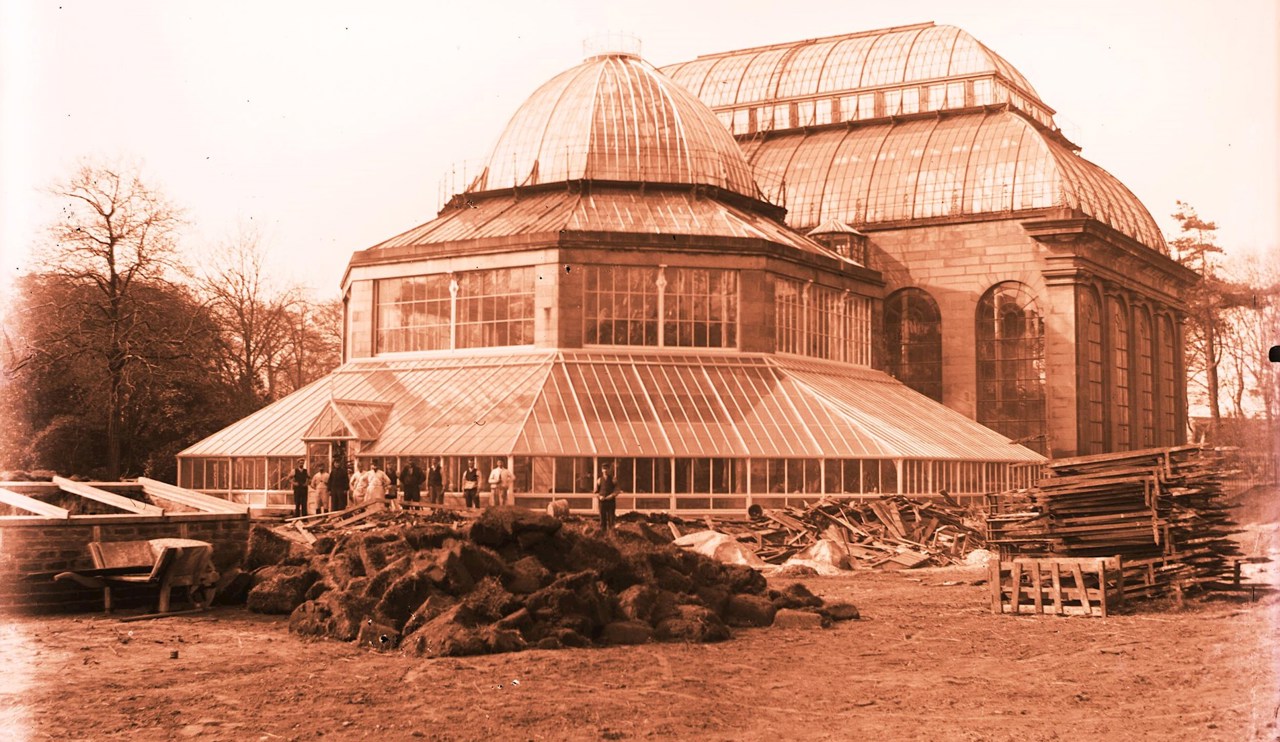
The Temperate Palm House
Completed in 1858, the Temperate Palm House is the tallest traditional Palm House in Britain, with a height of 21.95 metres.
Designed by Robert Matheson, the glasshouse cost £6,000 and was largely built of sandstone quarried at Bishopriggs, near Glasgow, with a roof of curvilinear iron rafters. The principal gardener at the time was a man called James McNab, who believed that solid masonry prevented rapid cooling and provided shade for the successful cultivation of plants; he also argued that too much sunlight was not good for growing palms, hence the front of the glasshouse was made to face west.
The range of plants grown here in its early years included bananas, bamboo, a date palm, sugar cane, figs, allspice and mahogany.
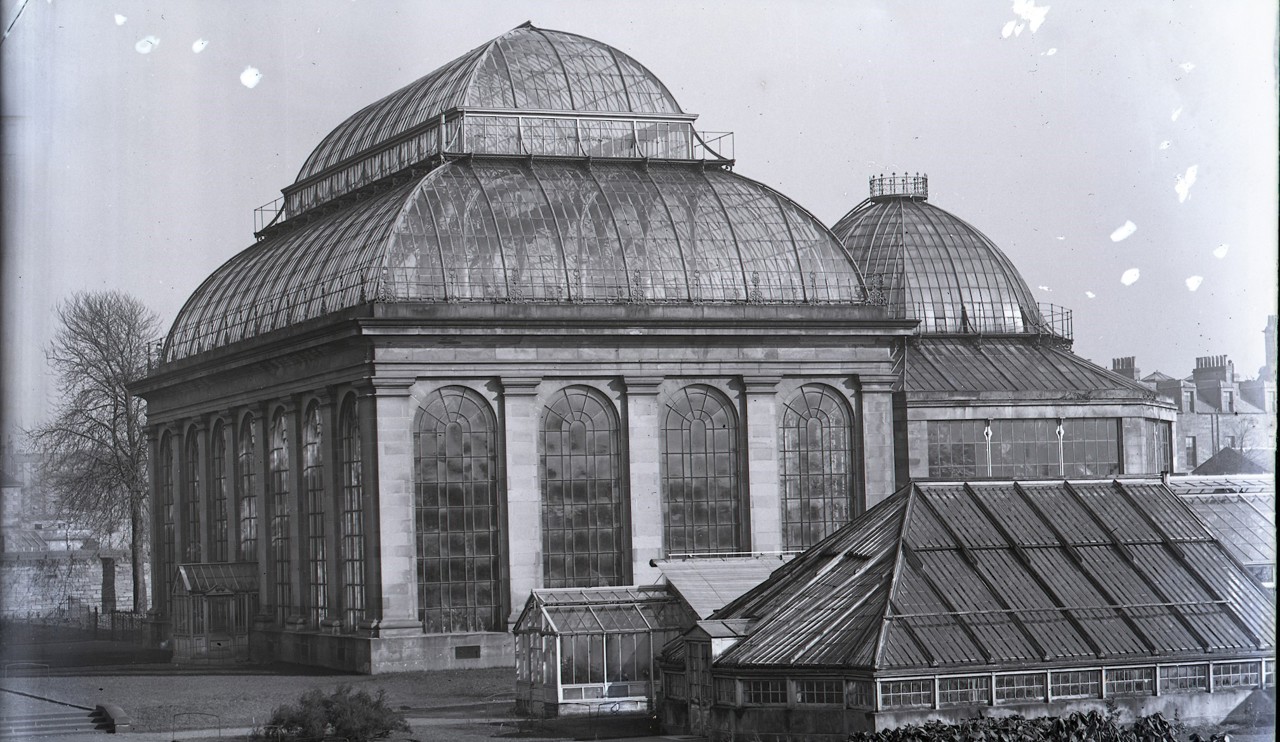
The 1960s Front Range
When built in 1967 the 128 metre long main glasshouse range was regarded as the greatest innovation in glasshouse design in a century.
The then Curator of the Garden, Dr. E.E. Kemp insisted that there be no internal supporting structures impeding the growth of plants, thus allowing the maximum space and light inside.
GAH Pearce, architect with the Ministry of Public Works, achieved this using steel cables to suspend the main structure from a tetrahedral lattice framework.

Inside there are two levels with five climatic zones. They were filled with topsoil from the construction site of the Forth Road Bridge, being built at the same time.
One of the most popular plants is the Victoria amazonica (giant water lily), which grows in the ‘Plants & People’ house; its first flower bloomed in time for the official opening of the glasshouses by the late Princess Margaret, Countess of Snowdon.
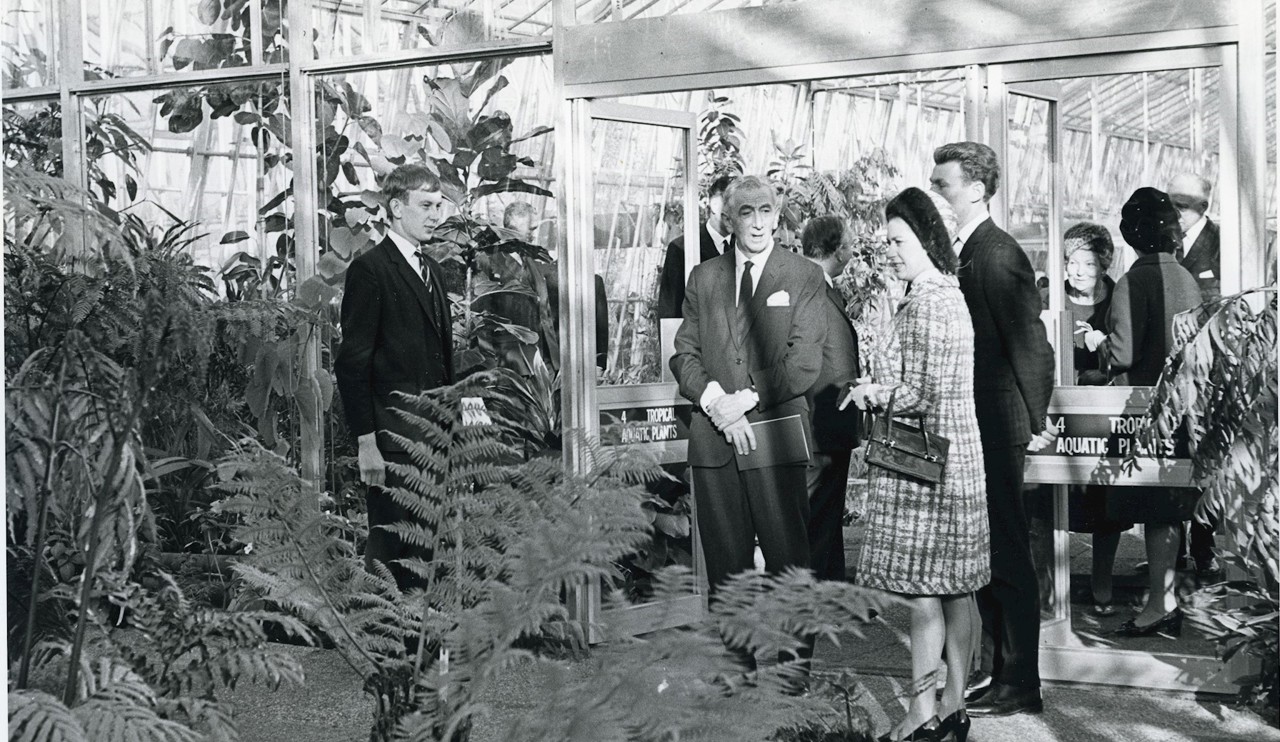
Princess Margaret in the Fern House at the Exhibition opening (1968)
The collection of tender plants continues to grow along with the glass structures to cultivate them. In 1978 Montane and Wet Tropics houses were built for members of the ginger family (Zingiberaceae), the African violet family (Gesneriaceae) and tender rhododendrons (section Vireya). Behind the scenes, 'back-up houses' provide space for propagation, quarantine and research.
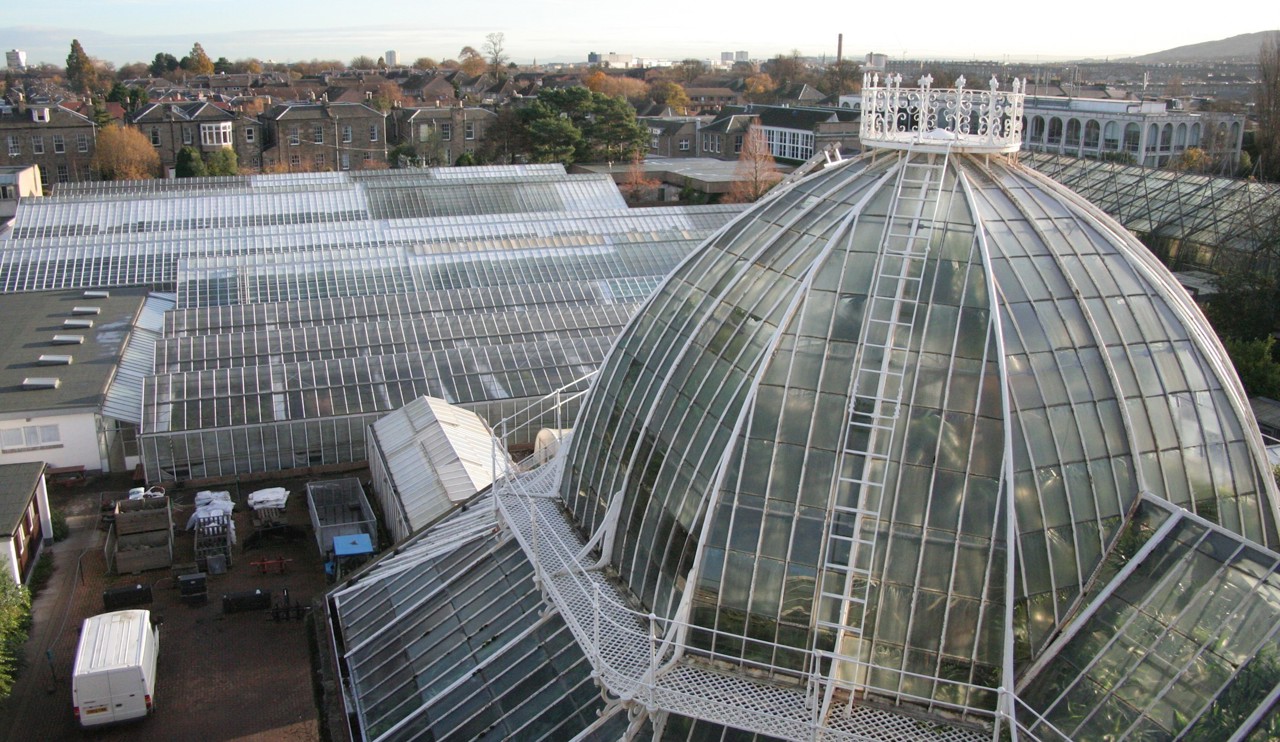
Research Glasshouses and Tropical Palm House
The Future
The much-needed restoration of the Garden's Grade A Listed Heritage Glasshouses will shine at the heart of the new Edinburgh Biomes project.
By restoring our historic Glasshouses, we will safeguard the globally important collection of plants housed within them and protect these buildings of unique and architectural significance for future generations.
